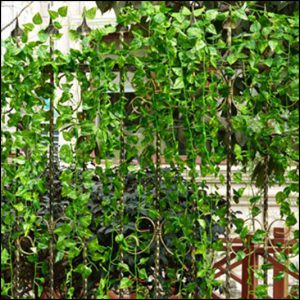Vertical Greenery
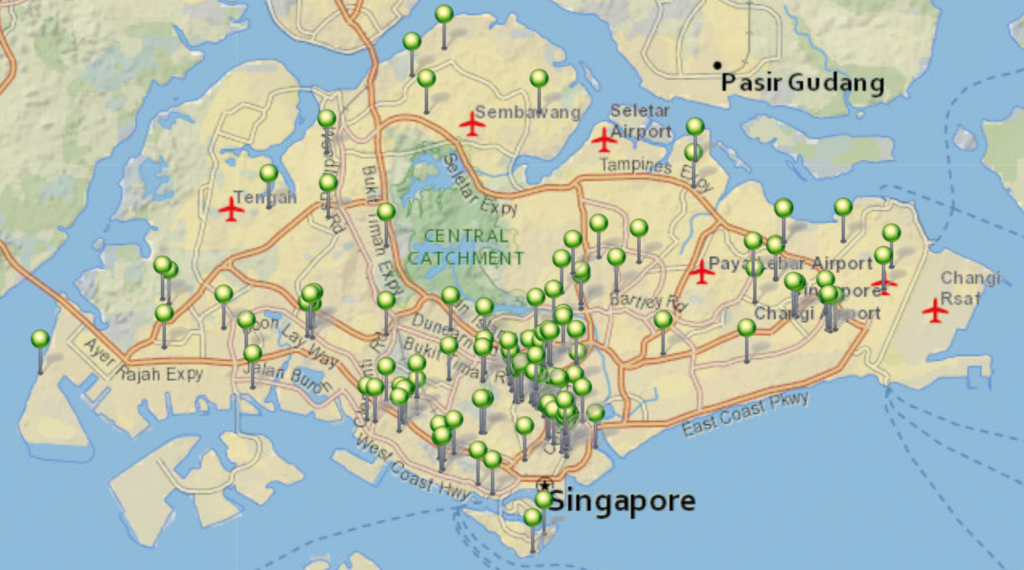
Introduction
The Vertical Greenery System (VGS) concept can be traced during the 7th Century B.C (Hanging Gardens of Babylon)1, as well as during the Roman Empire2. The Vertical Greenery System (VGS) can be used interchangeably with Bio-shader3, Living Walls4, Green Facades5, Green Wall6 and Vertical Greenery7. Commonly referred to as a Green Wall, the VGS is an inclusive term that represents any manner in which plants grow on, up, or against the façade of building or feature walls8. VGS signifies infrastructure/ building-related greenery that aids in mitigating urban heat islands and reducing energy consumption through the integration of nature into urban areas9. If well maintained, a typical green wall can live up to 25 years10, and the types of maintenance applied to it differs according to the choice of system used with basis to the type of plants selected for the vertical surface11.
The many benefits of VGS are:
|
Aspects |
Type of Benefits |
| Aesthetic | Enhance architectural designs, create iconic landmarks in the city12 Visual Relief from Urban Environment12 Screen and isolate views13 |
| Environment | Reduce UHI Effect through both direct shading and evapotranspiration cooling12;14 Improving air quality by trapping and breaking down harmful pollutants as well as reducing amount of allergens in the atmosphere15 Rainwater retention and treatment where vertical vegetation is observed to retain and slow surface runoffs during heavy rainfall7 Increase urban biodiversity with creation of micro habitats within the built environment13 Reduce Noise Pollution where trapped layer of air between plants act as an acoustical barrier to insulate and reduce the noise transmission of heavy machinery or road traffic16 |
| Economic | Reduction of cooling loads through better insulation and shading, thereby generating cost savings from the reduction in energy consumption17 Enhancing Property Value18 Protection of building facade19 |
| Psychological | Foster Community Interaction20 Individuals who suffer from asthma or other respiratory conditions can experience advantages from the air-purifying characteristic of incorporating vertical greenery systems in their environment.20 Enabling a restorative impact to captivate the viewer, thereby improving one’s health21 |
Green walls are classified into two systems such as the continuous living wall system and the modular living wall system. A continuous living wall system uses lightweight and permeable screens to which plants are added individually. It involves the installation of a frame to the wall, with a void in between them for framing support and wall protection against humidity. With a modular living wall system, components have a certain dimension, which includes the growing media reinforcing the plant’s growth. Each component is held by a corresponding structure or is directly mounted to the vertical surface (e.g. trays, vessels, planter tiles and flexible bags)22.
Moreover, there are three main types of VGS, as shown in in Figure 1: the planter box system, cassette system and climber system. A planter box system consists of boxes installed at intervals onto the structural wall and is made up of modular units; with plants ranging from small creeping herbaceous perennials, ferns, grasses to small shrubs. Similarly, the cassette system is wall mounted where plants grow horizontally11. A climber system uses plants that grow from a base up to certain heights on supporting rods. A living wall system can be either continuous or modular, depending on the method of application. For wired and mesh support structures, plant selection of climbers that ranges mostly from twiners to the use of tendrils that cling to whatever support is at hand23.
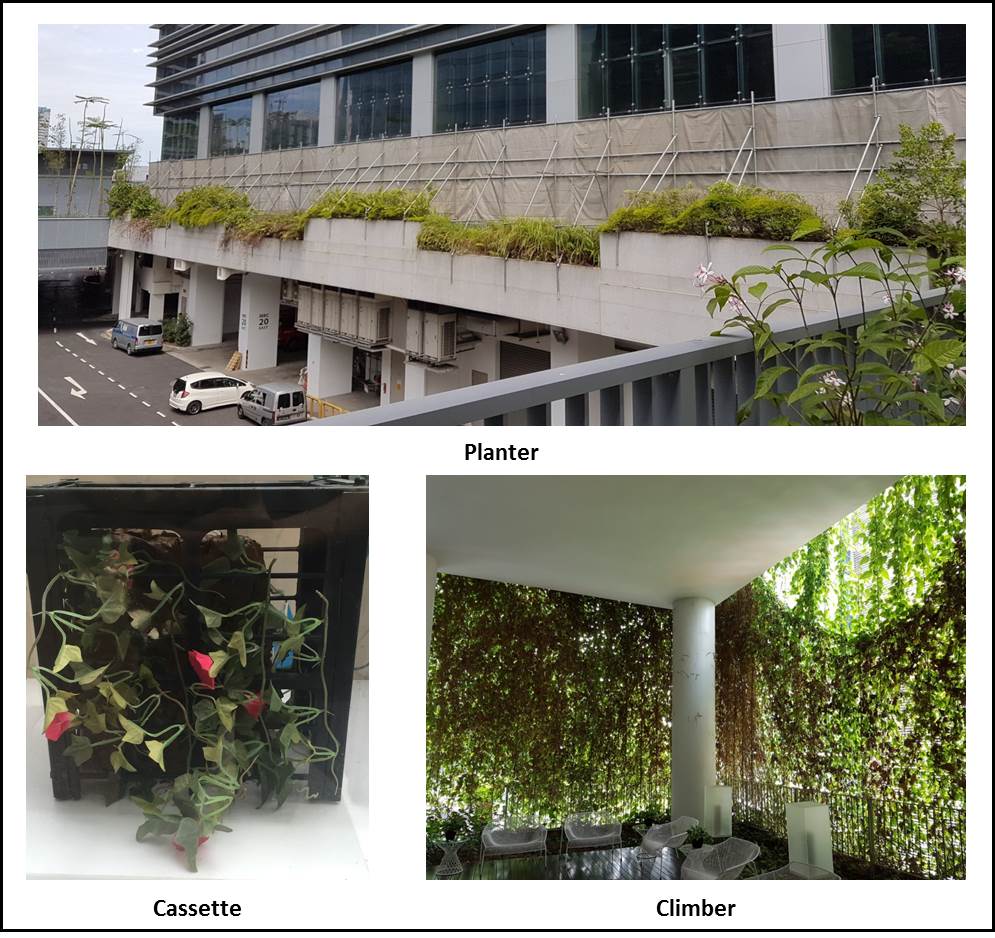
A climber system also refers to as the support type and commonly known as “green facades” allow plants to grow on specially designed support structures, which guided them to cover a desired area. The climbers are also capable of reaching 10-20 meters in height and can cover huge amounts of urban wall space, gradually forming green veils or screens across the supplied structured support. Types of structural support adopted are usually in the form of wired, mesh structures or in modular panels24.
| Support Type | Brief Description |
| Wired structure
 | Wired structures use a system of steel cables, anchorages, separators that serves as support for climbing plants. |
| Mesh Structure
 | Mesh structure is a very light structure that provides support for the climbers, made with steel mesh anchored to the building wall or to the building structure. |
| Modular Panels
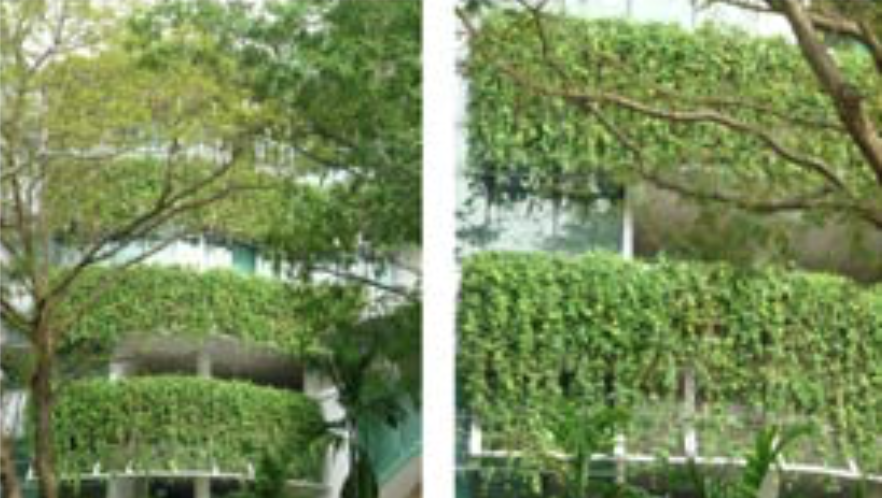 | Modular panel structures, on the other hand, are very light trellis metal modules designed to hold the climbers away from the wall surface so that plant materials do not attach to the building25. The climbers are usually grown directly from planter boxes containing soil, which are located at various levels of the building to achieve a lush and even growth of greenery7. |
The carrier system includes both the cassette (vertical) and planter (horizontal) system (see Figure 2). It consists of pre-vegetated modular cassettes that are mounted on metal framing and are vertically attached to a structural wall and a variety of alternative designs can be created from it. The carrier system consists of three main components namely, the growing substrate media, the carrier that holds the substrate media and its structure. The modular cassette can be made of a wide range of materials (including plastic, synthetic fabric, clay or metal) that contains the growing media to support the vegetation by upholstering plants22.
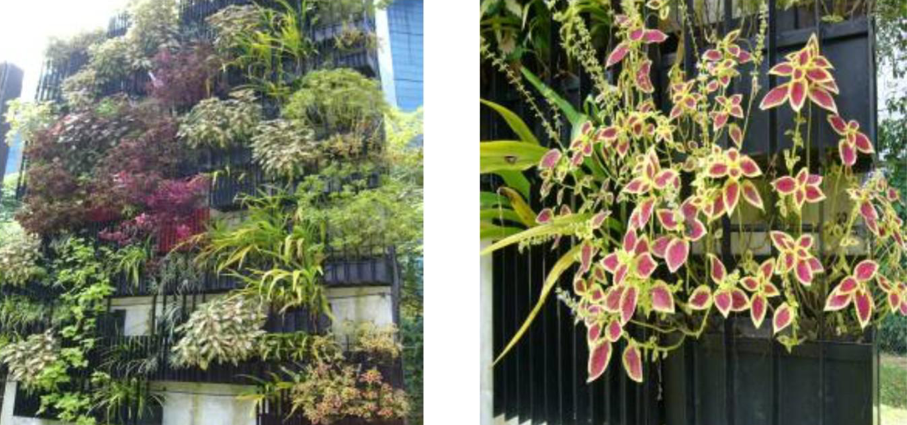
(Photo source: DiXie, 2012)
On the other hand, the planter system consists of plants grown in individual ‘mini-planters’ boxes containing soil type media, which are mounted and secured at regular intervals onto a structure or frame26, forming a comprehensive green wall coverage (see Figure 3). This allows the plants to grow on a normative horizontal plane similar to typical landscaping. The plants therefore tend to grow well and the substrate media is better able to retain moisture level. In addition, the modality in the system allows for high flexibility in terms of design change to suit the occasion24.

With the growing installations of VGS in buildings in Singapore, the HDB Building Research Institute, was set up in 2009 to spearhead research and development efforts in building and environmental sustainability, which include the has development of two green wall systems (see Figure 4). The patent is still pending, although these systems are already applied in four major public housing developments in Singapore:
- The Verti.Green Wall System consists of a lightweight modular plant-housing device with 16 compartments for the placement of plants. This system has a unique feature that allows for the use of more than one type of plant species within each cassette. It also facilitates plant replacement in each compartment, and creates interesting and aesthetically pleasing landscaped walls.
- The Verti.Gro Green System is a modular, lightweight plant tray integrated with prefabricated steel mesh and climbers to form a vertical green wall. This concept of vertical greening offers porosity for ventilation and natural daylighting to the building.
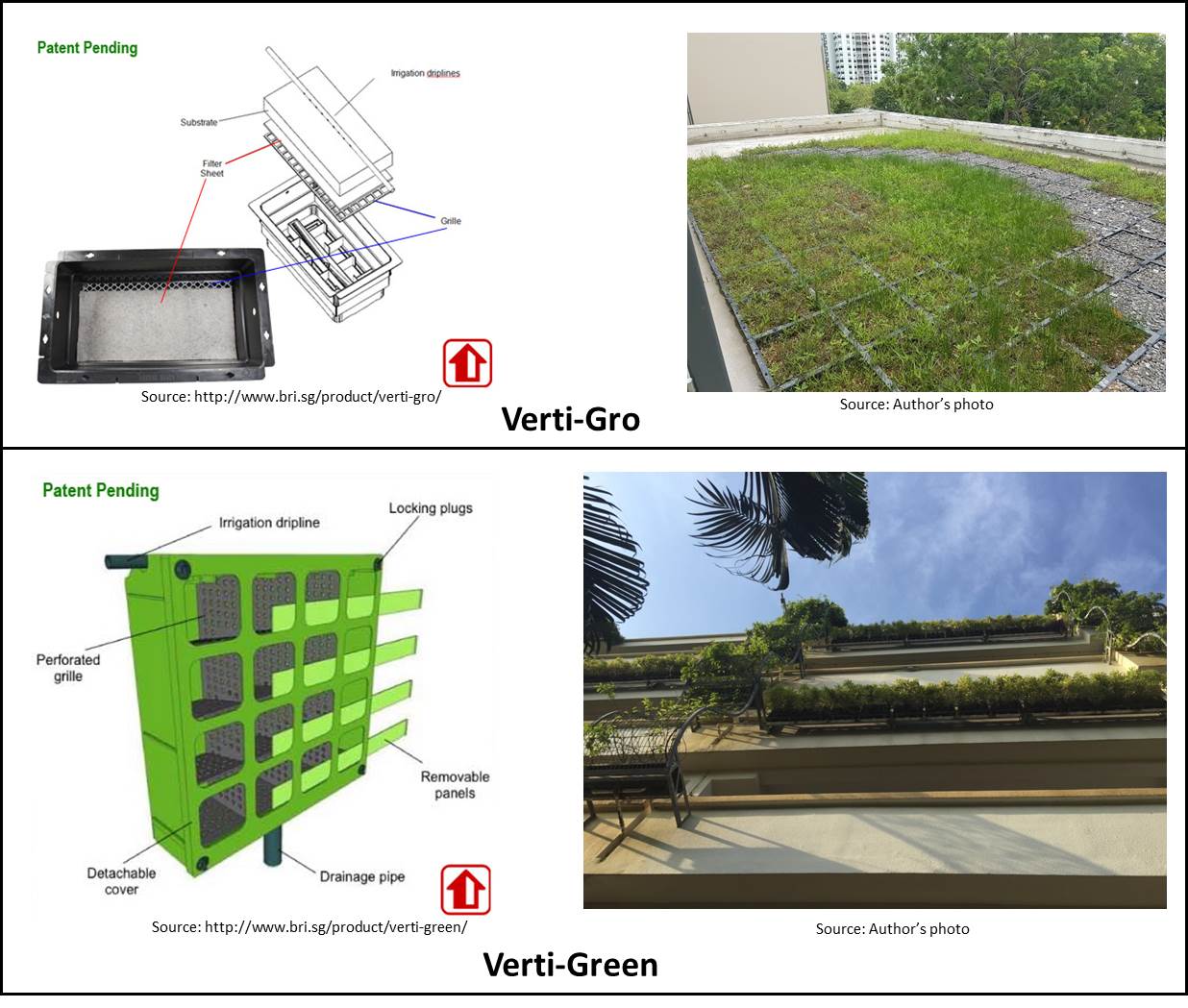
In terms of plant species, the Epipremnum aureum, popularly known as the “money plant”, which is commonly found in Singapore (Figure 5) is used as either a climber or creeper, since it grows easily and is commonly found in interior landscapes and hanging baskets. Other plant species from plant families such as Apocynaceae, Araceae, Gesneriaceae and Polypodiaceae are highly favourable in Singapore’s tropical setting because of their moderate water consumption and only requires moderate sunlight. The Syngonium podophyllum, commonly known as the “White Butterfly”, thrives in indoor spaces and can grow in moderate sunlight and full shade. The White Butterfly improves indoor air quality by removing toxins in the air, which has allowed it to be used extensively in indoor green walls27 (Figure 6).
